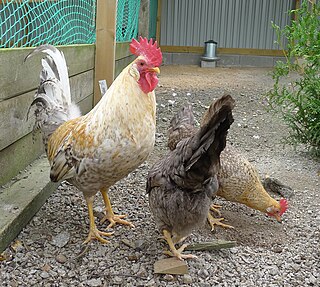Related Research Articles

The University of Bergen is a public research university in Bergen, Norway. As of 2021, the university had over 4,000 employees and 19,000 students. It was established by an act of parliament in 1946 consolidating several scientific institutions that dated as far back as 1825. It is Norway's second-oldest university, and is considered to be one of the nation’s four so-called "established universities." It has faculties and programmes in all the academic fields typical of a classical university, as well as such degree programmes as medicine and law that, traditionally, only the “established universities” are authorized by law to offer. It is also one of Norway's leading universities in many of the natural sciences, including marine research and climate research. It has consistently been ranked in the top 200 or top one percent of universities in the world, and as one of the best 10 or best 50 universities worldwide in some fields, such as earth and marine sciences. It is part of the Coimbra Group and of the U5 group of Norway's oldest and highest-ranked universities.
The Government agencies of Norway are state-controlled organizations that act independently to carry out the policies of the Government of Norway. The government ministries are relatively small and merely policy-making organizations, allowed to control agencies by policy decisions but not by direct orders. A minister is explicitly prohibited from interfering with the day-to-day operation in an agency or the outcome in individual cases. While no minister is allowed to give orders to agencies personally, they are subject to decisions made by the government. Also, the minister is normally the instance of appeals for agency decisions.
The Royal Ministry of Education and Research is a Norwegian government ministry responsible for education, research, kindergartens and integration. The ministry was established in 1814 as the Royal Ministry of Church and Education Affairs.
Knut Helle was a Norwegian historian. A professor at the University of Bergen from 1973 to 2000, he specialized in the late medieval history of Norway. He has contributed to several large works.

The Jærhøns or Norske Jærhøns is the only indigenous breed of domestic chicken in Norway. It is named for the traditional district of Jæren in the county of Rogaland.
The Norwegian Institute for Cultural Heritage Research is a cultural heritage research institute based in Oslo, Norway.

The Telemarkfe or Telemark is a traditional Norwegian breed of dairy cattle. It originated in, and is named for, the county of Telemark in central southern Norway. In the second half of the nineteenth century it spread – with official encouragement – to most of the eastern and southern part of the country. In the twenty-first century it is an endangered breed, with a total population of fewer than 600 head.

Eirik Johan Solheim is a Norwegian professor in orthopaedic surgery at the University of Bergen in Norway. Eirik Johan Solheim defended his doctoral thesis Effects of Bioerodible Polyorthoester on Heterotopic and Orthotopic Bone Induction in Rats at the University of Oslo in 1993. He did his specialist training for orthopedic surgery at Hagavik Hospital, Haukeland Universitetssykehus og Haraldsplass Deaconess Hospital.
Anton Elias Smitt was a Norwegian forester.

Anton Wilhelm Brøgger was a Norwegian archaeologist and politician.
The Dølafe is a rare breed of cattle.
The Norwegian Union of Forestry and Agricultural Workers was a trade union in Norway.
Lars Borgersrud is a Norwegian military historian and government scholar. His work has largely centered on World War II in Norway.
Håkon Robak was a Norwegian forester.
Open access scholarly communication of Norway can be searched via the Norwegian Open Research Archive (NORA). "A national repository consortium, BIBSYS Brage, operates shared electronic publishing system on behalf of 56 institutions." Cappelen Damm Akademisk, Nordic Open Access Scholarly Publishing, University of Tromsø, and Universitetsforlaget belong to the Open Access Scholarly Publishers Association. Norwegian signatories to the international "Open Access 2020" campaign, launched in 2016, include CRIStin, Norsk institutt for bioøkonomi, Norwegian Institute of Palaeography and Historical Philology, Norwegian University of Science and Technology, Oslo and Akershus University College of Applied Sciences, University of Tromsø, University of Bergen, University of Oslo, and Wikimedia Norge.

Thor Hiorth Schøyen was a Norwegian entomologist.
The Fram Committee Nansen Award is a Norwegian academic award for polar research named after Fridtjof Nansen. The award has been given out since 1961 by the University of Oslo. It can be awarded to Norwegian researchers who, through a dissertation or otherwise, have made significant contributions to the exploration of the polar areas in biology, geography, geophysics, geology, or oceanography. The award is conferred on Nansen's birthday, October 10.
Hans Jacob Arnold Kreyberg was a Norwegian professor of economics. He was born at Levanger, grew up in Oslo and spent the first part of the Second World War in the USA where he graduated from Riverdale before entering the Norwegian medical corps alongside his father Leiv Kreyberg.
Knut Henrik Lund was a Norwegian sculptor known for his portrait busts.
Brynjulf Alver was a professor at the Etno-folkloristisk institutt at the University of Bergen.
References
- ↑ "Information in English". Norwegian Forest and Landscape Institute. Retrieved 28 May 2009.
- ↑ Henriksen, Petter, ed. (2007). "Norsk institutt for skog og landskap". Store norske leksikon (in Norwegian). Oslo: Kunnskapsforlaget. Retrieved 28 May 2009.
- ↑ Universitetet i Bergen. "Norwegian Forest and Landscape Institute - State Administration Database - NSD". NSD Data on the Political System. Universitetet i Bergen.